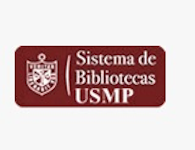Perfil epidemiológico y características clínicas de la onicomicosis en población militar

Ver/
Trabajo
(application/pdf: 280.9Kb)
(application/pdf: 280.9Kb)
Fecha
2017Autor(es)
Casanova-Claure, Eliana
Navarrete-Mejía, Pedro
Metadatos
Mostrar el registro completo del ítemResumen
La onicomicosis es una infección ungueal frecuente y constituye un problema de salud pública por su alto índice de morbilidad. En los militares, está relacionada a sus condiciones laborales.
Objetivo: Conocer la prevalencia, características clínicas y agentes etiológicos de la onicomicosis pedia en población militar. Material y métodos: Estudio descriptivo, retrospectivo, transversal, no experimental. Participaron 67 militares (oficiales, técnicos, suboficiales y personal de tropa); los casos fueron atendidos en el servicio de dermatología de un hospital castrense entre febrero de 2016 y febrero de 2017. Resultados: 50.7% de la población fue menor de 60 años, 7.5% de sexo femenino, y 65.7% del grupo de técnicos y suboficiales. El 80.6% tuvo compromiso de dos uñas, 50.7% de tres uñas y 3% de 10 uñas. En 62.7% de los casos, la forma clínica prevalente fue onicomicosis subungueal distal lateral. En 41.8% hubo positividad al examen directo a hifas, en 32.8% a levaduras y en 10.4% a especies mixtas. En 50.7% hubo cultivo positivo a Trichophyton rubrum, en 23.9% a Candida parapsilosis y en 4.5% a infecciones mixtas. Conclusiones: En población militar, el agente etiológico prevalente de onicomicosis pedia fue Trichophyton rubrum; la forma clínica, onicomicosis subungueal distal; predomina en el sexo masculino y en el grupo de técnicos y suboficiales.
Colecciones
- Artículos [274]
Materias
Editor
Colegio Ibero-Latino-Americano de Dermatología
Acceso
info:eu-repo/semantics/openAccess
Notas
ABSTRACT
Onychomycosis is a frequent nail infection. It is a public health problem due to its high morbidity rate. In the military, it is related to their working conditions. Objective: To know the prevalence, clinical characteristics and etiological agents of onychomycosis pedis in the military population. Material and methods: Descriptive, retrospective, cross-sectional, non-experimental study. Sixty-seven people participated, including officers, technicians, non-commissioned officers and troop personnel; the cases were treated in the dermatology service of a military hospital between February 2016 and February 2017. Results: 50.7% of the population were under 60 years old, 7.5% female and 65.7% belonged to the group of technicians and non-commissioned officers; 80.6% had involvement of two nails, 50.7% of three nails and 3% of 10 nails. In 62.7% of the cases, the clinical form that prevailed was lateral distal subungual onychomycosis. In 41.8% we found positivity in the direct test to hyphae, 32.8% to yeast, 10.4% to mixed species. In 50.7%, the culture was positive to Trichophyton rubrum, 23.9% to Candida parapsilosis and 4.5% to mixed infections. Conclusions: In the military population, the prevalent etiological agent of onychomycosis pedis was Trichophyton rubrum; the clinical form was subungual distal onychomycosis; it predominated in males and in the group of technicians and non-commissioned officers.







